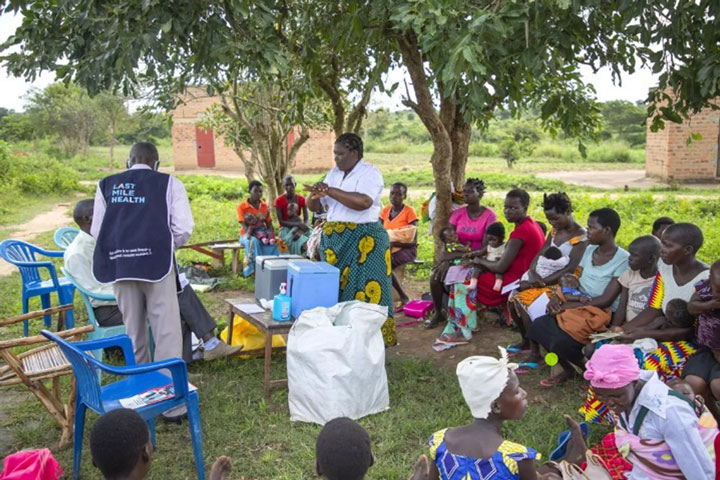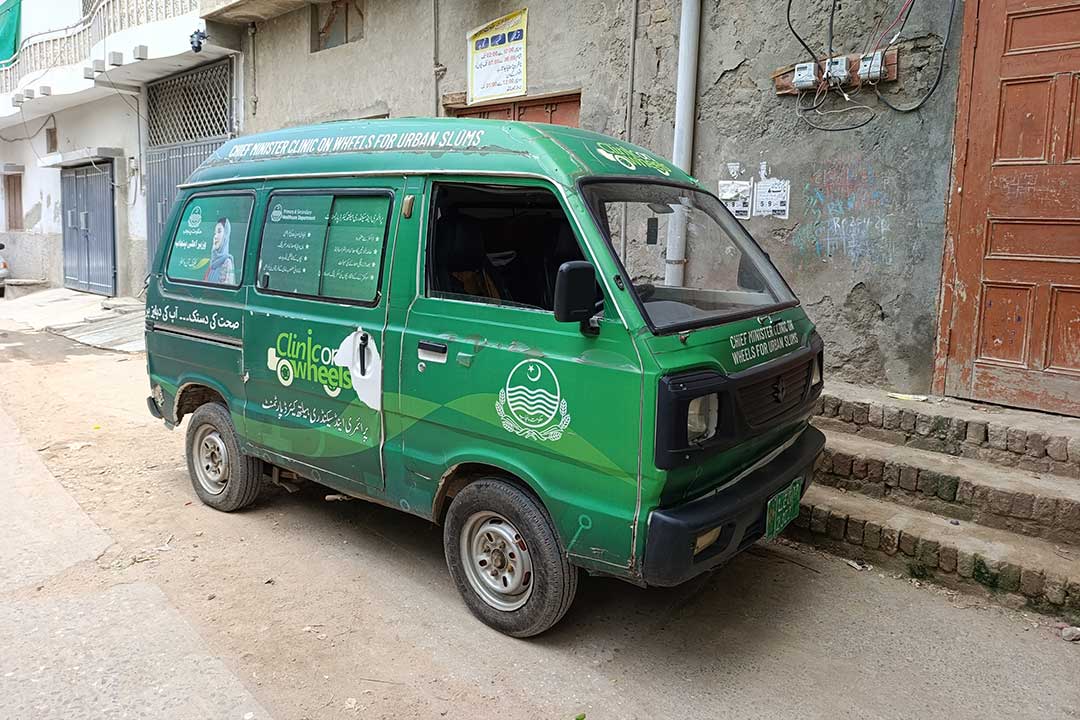Kenyans, hard-hit by tuberculosis, are helping to test a promising new vaccine
The century-old BCG vaccine works in children, but isn’t very protective in adults and adolescents. The world needs a new vaccine – and Kenya is taking its place on the frontlines of science.
- 12 August 2025
- 6 min read
- by Brian Kabenah Mwaniki

As Kenya continues to take heavy losses in its battle against tuberculosis (TB), the country is also taking up a place on the frontlines of the search for a new game-changing shield against the age-old bacterium.
Kenya joined the multination Phase 2b IMAGINE clinical trial in February 2025. The study aims at evaluating a potential improvement to the century-old Bacillus Calmette-Guerin (BCG) jab, which works well in children, but is less effective in adults and adolescents.
Dr Jane Nduta, a lead investigator at Centre for Respiratory Disease Research (CRDR) in Nairobi, which is locally co-leading trial with the Kenya Medical Research Institute (KEMRI), explained, “This trial isn’t just about updating BCG. It’s about rewriting the rules of TB prevention. We’re testing immune responses and safety rigorously, using the highest scientific standards. The goal is long-lasting, stronger immunity.”
The trial spans 15 sites across Kenya, South Africa and Tanzania. Researchers hope the new vaccine – a BCG booster – will offer better protection against pulmonary TB in adults and adolescents, groups for whom the original BCG vaccine has shown limited long-term efficacy.
Age-old killer
An updated preventive arsenal is overdue. Despite decades of using the BCG vaccine, the World Health Organization (WHO) reports that Kenya lost an average of 14 people every day to TB in 2023. That year alone, Kenya reported 97,126 new and relapse cases of tuberculosis (TB) – a 7.2% increase from 2022. And even those figures may represent an undercount of as much as 26%, based on the global health organisation’s estimates.
TB also places a significant strain on Kenya’s already overburdened health system. Nationally, about 25% of TB patients are co-infected with HIV – a high-risk group that numbers in the tens of thousands and is especially difficult to treat and cure. The pressure is particularly acute in western counties such as Kisumu, Siaya, Homa Bay, and Busia, regions that consistently report the highest TB–HIV co-infection rates in the country – often exceeding 40–50% – and elevated rates of multidrug-resistant TB (up to 6%).
Poverty, undernutrition, overcrowded housing and smoking – which weakens the lung’s natural defences – help drive the high rates of TB. Stigma and misinformation also contribute to delays in seeking care, particularly in rural and informal urban settlements.
Battle-plan
A new vaccine is not the only iron in the fire. Kenya has launched several ambitious interventions under its 2024–2028 National Strategic Plan for TB, Leprosy and Lung Health control, including scaling up digital diagnostics, targeting drug-resistant TB and integrating services for TB and HIV.

Community health workers and volunteers man the frontlines of ongoing TB prevention efforts, screening over 146,000 household contacts of TB patients in 2024 alone. Innovative approaches, such as USSD self-assessment codes (which allow individuals to report symptoms and receive triage guidance) peer-led testing models in prisons (high-density, and therefore high-risk environments), and AI-powered X-ray screening, are helping to extend reach and provide care in hard-to-access areas.
In recent years, the country has made significant strides in improving its TB diagnostic capabilities. Innovations like Truenat PCR machines – which offer results much faster than traditional sputum smear microscopy, and can be accessed close to the point-of-care in many cases – and digital chest radiography are enabling faster, more accurate detection of the disease.
New therapeutic drugs and shorter regimens for drug-resistant TB are now available, providing more effective options for patients. However, challenges persist, including occasional stock-outs of medications, chronic underfunding and the absence of paediatric formulations, all of which continue to hinder progress.
“We could save thousands”: voices from the frontlines of science
But a new preventive tool could help rout the bug definitively.
The KEMRI-led trial is currently in Phase 2b, a critical stage that tests both the safety and efficacy of the MTBVAC vaccine in adolescents and adults who have latent TB infection.
Kenya began enrolling participants in February 2025, and the vaccination phase is expected to run through early 2026. A total of about 4,300 volunteers will receive the updated vaccine during this period. After administration, health workers monitor participants closely – looking out for any adverse reactions, while also screening for signs of enhanced immune response and protection against progression to active tuberculosis.
Have you read?
At a health facility in Nairobi’s Kibera informal settlement, 29-year-old Peter Otieno waited patiently for his post-vaccine check-up. He had enrolled in the trial just two weeks before VaccinesWork caught up with him.
“I lost my cousin to TB last year,” he said. “He was strong, then suddenly he wasn’t. When I heard they were looking for volunteers, I decided to help. If this works, we could save thousands.”
Nearby, we met community health volunteer Nancy Wanjiku, who described her door-to-door sensitisation work – a necessary preparatory step for the trial.
“People are scared at first. They ask, ‘Is this vaccine safe? What if it gives me TB?’ We listen, explain, show them how it works. Some agree to come, especially when they hear others from the community already have.”
To Wanjiku, the trial is as much about building trust as it is about medical science. Field workers like her play a critical role in dispelling myths and making scientific research transparent and accessible to ordinary Kenyans.
Hope, but not without hurdles
Despite progress, stigma, fear and misinformation remain serious obstacles. Some in the trial communities worry that the vaccine might be a foreign experiment, or that side-effects could be hidden. KEMRI and CRDR are working to counter these views with bracing transparency. Community meetings, patient support groups and forums are being used to explain the science behind the trial. Efforts are made to address questions openly without amplifying conspiracy theories or unfounded fears.
Dr Nduta noted: “We’ve seen how misinformation can destroy trust in vaccines. That’s why we involve community leaders, health volunteers, and former TB patients in our outreach. It’s about solidarity and honesty.”
New horizon
Should the vaccine prove successful in this phase of testing and secure the necessary approvals, Kenya hopes to integrate this new vaccine – or one like it – into its routine immunisation programme. Dr Immaculate Kathure, acting head of the National TB Program, outlined the broader vision:
“We’re thinking ahead. A TB vaccine for adolescents or adults could fit perfectly into our universal health coverage strategy. It would protect working-age populations and reduce the community spread that keeps TB alive.”

The Ministry of Health is working with partners like Gavi, WHO and UNICEF to ensure the results of the trial – expected in 2026 – can be acted upon swiftly. Budget provisions, supply chain planning and integration into national policy are already under discussion.
A turning point?
The stakes are high. Kenya, like the rest of the world, has relied on the BCG vaccine for over 100 years. But BCG alone has not been enough to break the back of TB.
This trial represents not just a scientific frontier, but a shift in how Kenya engages with vaccine research and global health partnerships.
As the trial continues, those involved remain hopeful. Peter Otieno, now part of that future, smiled after his final blood draw. “Maybe it won’t help me. But maybe my children won’t have to go through what my cousin did. That's enough.”




